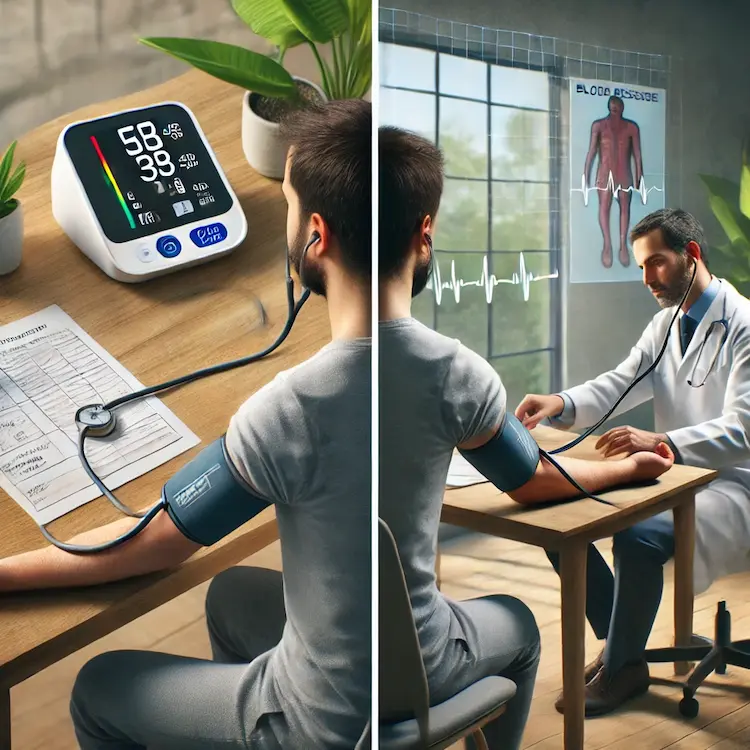Monitoring blood pressure (BP) regularly using sphygmomanometers, commonly referred to as “sph readings,” plays a critical role in preventing heart attacks and other cardiovascular diseases. Heart attacks, also known as myocardial infarctions, are responsible for millions of deaths worldwide each year. One of the most effective, yet often overlooked, methods for early detection of cardiovascular risk factors is consistent blood pressure monitoring. This article dives deep into how regular sph readings contribute to heart attack prevention, explores the tools used, highlights key statistics, and offers practical advice for incorporating this habit into daily life.
Sph readings refer to blood pressure measurements taken using a sphygmomanometer, a device that measures the force exerted by circulating blood against the walls of arteries. These readings consist of two numbers:
Blood pressure readings are direct indicators of cardiovascular health. High blood pressure (hypertension) strains arteries, accelerates plaque buildup, and increases the risk of heart attacks. By regularly tracking sph readings, individuals and healthcare providers can detect abnormal trends early, allowing for timely interventions such as lifestyle modifications or medications.
Hypertension is often called the “silent killer” because it rarely shows symptoms until severe damage occurs. According to the World Health Organization (WHO), hypertension contributes to approximately 13% of all deaths globally, with heart attacks being a primary outcome. Regular sph readings can catch hypertension in its early stages, often long before symptoms appear.
Isolated high readings may not signal chronic hypertension, but consistently elevated numbers over weeks or months indicate sustained risk. Daily or weekly sph readings help build a clear picture of cardiovascular health, helping doctors differentiate between temporary spikes (due to stress or illness) and long-term issues requiring intervention.
Unchecked hypertension can damage blood vessels and organs over time, particularly the heart, brain, kidneys, and eyes. Consistent monitoring allows patients and doctors to adjust treatments as necessary, preventing long-term complications that increase heart attack risk.

According to the Centers for Disease Control and Prevention (CDC), about 805,000 Americans have a heart attack every year — one every 40 seconds. Globally, heart attacks are responsible for over 9 million deaths annually (World Heart Federation). Most of these are linked to preventable conditions such as hypertension, obesity, and diabetes.
Heart attacks not only impact personal health but also have profound economic consequences. Treatment, rehabilitation, lost productivity, and long-term care for heart attack survivors place enormous burdens on healthcare systems and families. Regular sph readings, when paired with lifestyle changes, could significantly reduce these costs by preventing heart attacks altogether.
| Method | Description | Accuracy | Accessibility | Cost |
|---|---|---|---|---|
| Manual Sphygmomanometer | Traditional device with cuff, bulb, and stethoscope. Requires training for accurate use. | High, if used correctly | Low (medical settings) | Low |
| Digital Upper Arm Monitors | Automated devices for home use. Easy for patients to use. | High | High | Moderate |
| Wrist Monitors | Portable devices worn on wrist. Convenient but positioning-dependent. | Moderate | High | Moderate |
| Wearable Monitors (Smartwatches) | Tracks blood pressure using optical sensors. | Lower | Very High | High |
Select a clinically validated device suited to your needs (home use, travel, or continuous monitoring).

A 52-year-old man started monitoring his blood pressure daily using a digital upper arm monitor. Initially, readings hovered around 135/85, above the normal range. By improving his diet and adding daily walks, his systolic pressure dropped to 122 within 3 months, reducing his heart attack risk significantly.
A 60-year-old woman with a family history of heart disease began using a wrist monitor after experiencing mild chest discomfort. Her readings showed sharp spikes in the evenings. This prompted her to visit her cardiologist, leading to early diagnosis and successful treatment of coronary artery disease.
| Blood Pressure Category | Systolic (mmHg) | Diastolic (mmHg) | Risk Level |
|---|---|---|---|
| Normal | Less than 120 | Less than 80 | Low |
| Elevated | 120-129 | Less than 80 | Moderate |
| Hypertension Stage 1 | 130-139 | 80-89 | High |
| Hypertension Stage 2 | 140+ | 90+ | Very High |
Regular sph readings are a simple yet powerful tool in the fight against heart attacks. By enabling early detection of hypertension, helping patients and doctors track treatment effectiveness, and fostering heart-healthy habits, they play a pivotal role in long-term cardiovascular health. With advancements in digital health technology, incorporating sph readings into everyday life has never been easier. Consistent monitoring, combined with healthy lifestyle choices and medical oversight, can drastically reduce the risk of heart attacks and improve overall quality of life.